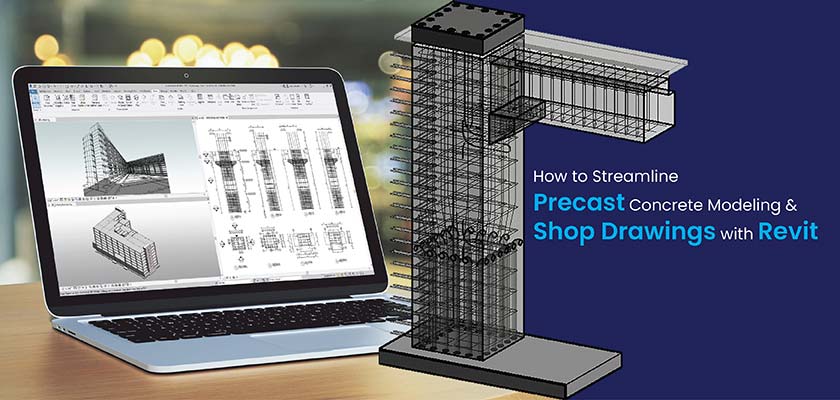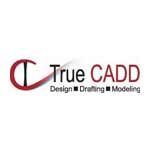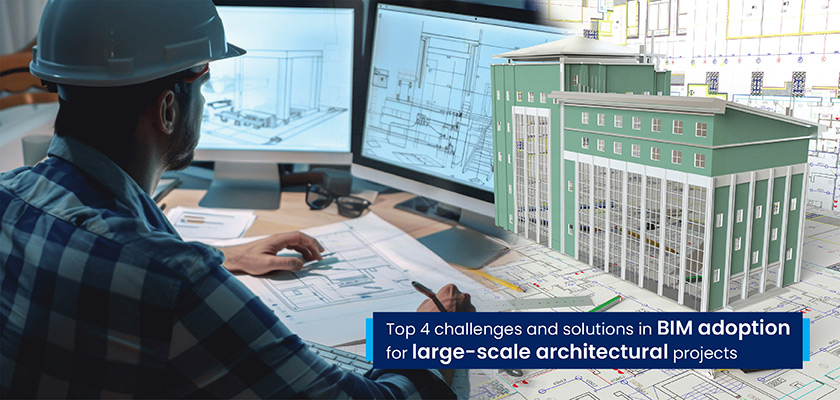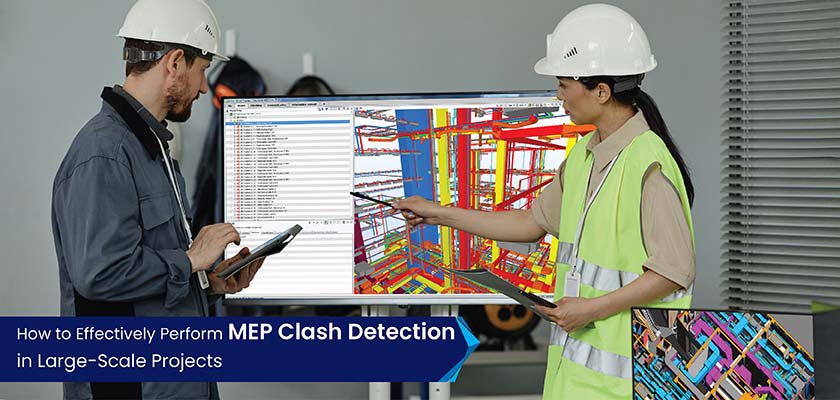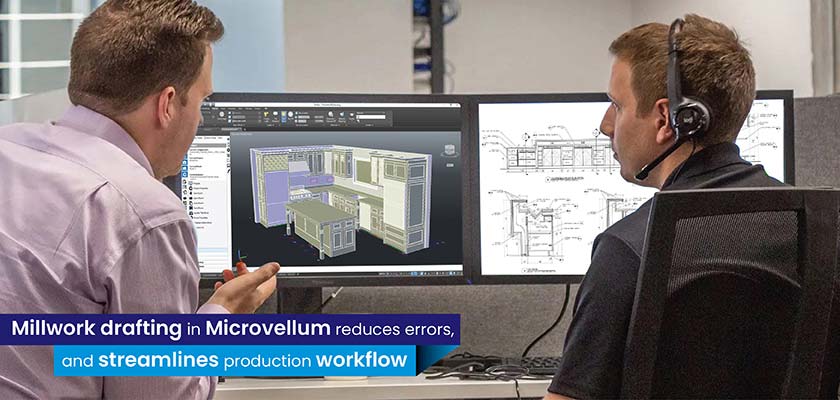Using Revit for precast concrete modeling and precast shop drawings improves project efficiency and coordination and reduces errors. Clear BIM-based visualization and communication lead to quicker approvals, fewer reworks and successful project handovers.
info@truecadd.com
A Fast Way to Get Precast Concrete Models & Shop Drawings in Revit
Table of Contents
- Understanding Precast Concrete Modeling in Revit
- Setting Up Your Revit Environment for Precast Modeling
- Efficient Concrete Modeling Techniques for Precast Elements
- Generating Accurate Precast Shop Drawings in Revit
- Case Study: Streamlining Precast Modeling with Revit
- Tips and Best Practices for Accelerating Precast Workflows
- Conclusion
Precast concrete offers significant advantages over on-site casting, including improved quality control and faster schedules. However, the complexity of precast design and coordination demands robust tools. Revit, with its BIM capabilities, provides one of the best precast concrete modeling and detailing solutions.
Revit enables the creation of precise 3D models of precast elements like slabs, walls, and connections. Concrete modeling in Revit facilitates accurate design, promotes clash detection, and automates the creation of precast shop drawings with detailed dimensions, views, and schedules. Integrating structural analysis and fabrication machinery streamlines the entire precast workflow.
Efficient workflows in precast concrete detailing are important to expedite project schedules. Streamlined processes lower errors, improve coordination between design and production teams and enhance resource utilization. This article explores how Revit enhances communication between design and fabrication teams, leading to efficient production processes and reduced errors.
The precast concrete market is projected to grow from USD 150.2 billion in 2025 to USD 247.5 billion by 2035, driven by its durability, cost-effectiveness, and ease of installation in construction. Key segments, including walls, floors & roofs, and structural beams, hold the largest market share due to high demand across residential, commercial, and industrial sectors.
Source: globenewswire.comUnderstanding Precast Concrete Modeling in Revit
Precast Revit modeling enables accurate 3D representation of precast members through specialized families and tools. The process seamlessly integrates reinforcement details, connection specifications, and production data. This integrated approach supports efficient fabrication and streamlines installation workflows.
Basics of Precast Concrete for Designers and Engineers
Precast concrete refers to concrete members that are manufactured in a controlled setting before being sent on-site for assembly. It ensures high quality, expedited construction timelines, and lower labor costs. Its significance lies in its capability to enhance project sustainability, efficiency, and structural integrity in present-day construction workflows. It also helps precast manufacturers with the flexibility to create complex shapes and customized finishes.
Using the capabilities of precast-driven software in Revit unlocks greater precision and efficiency for precast concrete projects. These tailored tools transform modeling, detailing, and documentation by offering various advantages over traditional techniques. Here are the top three benefits with their impact.
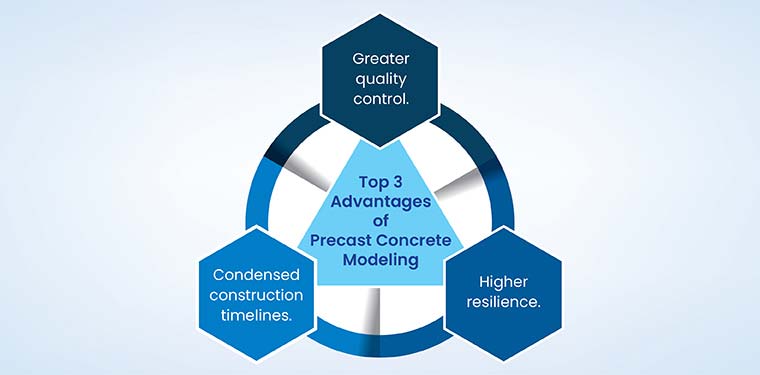
- Improved quality control: Precast concrete is built in an off-site and controlled factory setting, which ensures consistent quality, accurate mix proportions, and lower defects. It mitigates variations found with on-site casting. Thorough testing and inspections improve durability, strength, and performance, which leads to greater reliability in construction projects.
- Reduced construction time: Since precast members are created off-site and cured before handover, installation at the site is accelerated. This removes delays produced by changing weather conditions and lowers on-site labor needs. Quick assembly leads to planned project timelines, which makes it ideal for commercial development and large-scale infrastructure.
- Enhanced durability: Precast concrete is resistant to harsh environmental settings, which includes chemicals, weather, and fire. Its dense composition reduces water absorption, lowers cracks, and mitigates structural damage. This results in long-lasting construction with lower maintenance costs.
How precast modeling simplifies design processes for precast designers, structural engineers, architects, and concrete manufacturers
Precast modeling makes the design process seamless by supporting precast designers, structural engineers, architects, and concrete manufacturers to collaborate effectively. Using digital tools like Revit, it improves accuracy, enhances component visualization, optimizes layouts, and lowers errors. This ensures faster and cost-effective production and streamlined integration into construction projects.
Precast modeling also provides real-time adjustments and updates by helping stakeholders monitor modifications simultaneously. This dynamic workflow lowers delays driven by miscommunication and makes sure every team works with current design. Moreover, it also supports effective material planning, lower waste and costs while improving the performance and quality of the final project.
Revit’s Capabilities for Precast Modeling
Expediting precast concrete modeling in Revit includes utilizing the capabilities of specialized tools. Dynamo, a visual programming tool, enables complete automation of repetitive tasks, including the creation of complex geometries, reinforcement placing, and connection creation. Plugins, including the Structural Precast Extension for Revit, deliver dedicated tools to model custom precast elements, manage connections, and generate shop drawings.
Key functionalities in precast 3D modeling include segmentation for effective precast handling, accurate reinforcement placement for structural integrity, and streamlined connection integration for precise assembly.
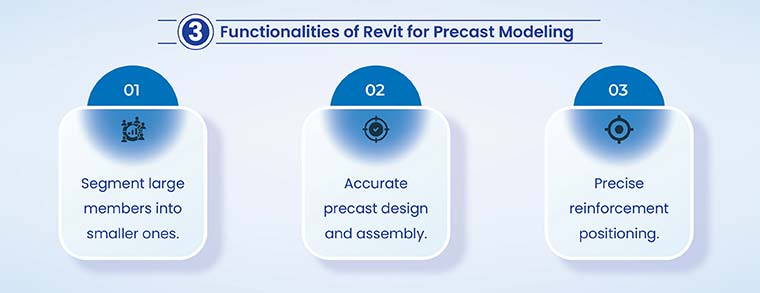
- Segmentation: Segmentation breaks down large precast members into smaller, manageable pieces, which makes it easier for transport and on-site assembly. This helps enhance logistics and lower handling costs while preserving the integrity of the complete structure. Dividing elements strategically helps precast members align together during the construction process.
- Reinforcement placement: It ensures accurate positioning of reinforcement within concrete which optimizes the structural strength of every precast element. Reinforcement modeling prevents the creation of weak points, which ensures structural stability and durability. This level of accuracy is critical to achieve high safety standards and ensure every precast member performs as intended under various load conditions.
- Integration of connections: It is required for accurate and effective precast design and assembly. Modeling accurate alignment and connection details, engineers and precast manufacturers ensure accurate fitment, while reducing the requirements for costly modifications and overall enhancements in coordination.
Using the capabilities of precast-driven software in Revit unlocks greater precision and efficiency for precast concrete projects. These tailored tools transform modeling, detailing, and documentation by offering various advantages over traditional techniques. Here are the top five capabilities with their impact.
Leverage our Revit expertise for accurate precast shop drawings and modeling.
Start Your Project Now »| Capability | Description | Impact |
|---|---|---|
| Automated model creation | Rapid creation of complex precast members with predefined parameters. | Reduction in manual modeling time. |
| Parametric design | Modification of dimensions and configurations through parametric controls. | Design flexibility and efficient iterations. |
| Connection design and detailing | Simplification of the creation and documentation of complex connections. | Accurate representations and clash detection. |
| Automated shop drawings | Extraction of in-depth precast shop drawings with detailed dimensions, views, and annotations. | Minimization of manual drafting and errors. |
| Improved collaboration | Leveraging coordination and communication using a unified Revit model. | Streamlined workflows, mitigated errors, and faster approvals. |
Revit improves collaboration between architects, structural engineers and manufacturers. By centralizing project data within a single model, Revit streamlines workflows, mitigates errors, and enhances coordination. Designers can generate accurate and detailed precast elements, while engineers can analyze structural integrity. Manufacturers can extract precise and detailed shop drawings for precast concrete design in Revit from a shared platform, which facilitates efficiency for the entire project lifecycle.
Setting Up Your Revit Environment for Precast Modeling
Setting up a Revit environment for precast modeling requires loading families, configuring project tolerances and units, and generating view templates with settings for precast elements. Using predefined settings and templates ensures consistency and makes the modeling process seamless.
Template and Family Setup for Precast Modeling
The creation of standardized families and templates is crucial for precast modeling workflows with tools like Revit. These templates ensure higher consistency for the entire project, which reduces issues and accelerates the 3D modeling process. Predefined families, settings, and views tailored for precast concrete streamline design, documentation, and fabrication. Using these customized families, designers and engineers can create precise precast models, which ensure every component aligns with planned project parameters.
Follow these key steps
- Setup a Revit template: Build a bespoke Revit template to streamline project initiation.
- Add views, schedules, and sheets: Predefined setup reduces manual work and expedites delivery.
- Load precast families: Establish connections, slabs, walls, and embeds for faster model creation.
- Parameterize all the families: Add parameters to filter, sort, and schedule members efficiently.
- Set size and materials: Configure families with accurate dimensions, material type, and reinforcement detail.
- Facilitate fast tracking and coordination: Employ naming consistency and tags to support seamless team collaboration.
This methodology ensures an error-free workflow to make the design and fabrication process seamless.
Project Parameters and Shared Parameters for Precast Design
Setting up projects and shared parameters is critical for effective management and tracking of precast members in concrete modeling. Project parameters are used to define required properties, which are specific to the entire project including dimensions, material types, and load-bearing capacities. Shared parameters allow the creation and use of consistent data between various families and components within the 3D precast model.
Setting these parameters, designers can ensure every precast member complies with the exact specifications to improve coordination and mitigate errors. These parameters facilitate precast element tracking by linking comprehensive information on schedules, which enables real-time updates and quick progress monitoring, improved material use, and faster fabrication timelines.
Shared and project parameters work in sync to simplify precast design and coordination.
- Define project parameters: Standardize every precast component data with key values.
- Setup shared parameters: Utilize parameters to achieve consistency across required model components.
- Assign various values: Apply dimensions, material types, and reinforcement to every component.
- Tag elements for filtering: Integrate tags to group, find, and manage components.
- Auto-populate schedules: Use parameters to automate schedules and lower manual work.
- Enable parameter-driven filters: Employ filters to visualize and organize required model components.
- Facilitate coordination: Authorize teams to extract valuable data for accurate quantity takeoffs.
- Expedite documentation: Streamline drawings and model tracking by applying parameters.
- Manage precast members: Monitor, update, and review every precast member in the 3D model.
Efficient Concrete Modeling Techniques for Precast Elements
Effective concrete modeling techniques include utilizing tools to create accurate and in-depth representations of concrete members. This involves the use of capabilities to generate complex shapes, manage data with parameters and generate schedules for seamless documentation.
Creating Precast Walls and Slabs
Here is a step-by-step guide to modeling precast walls and slabs in Revit.
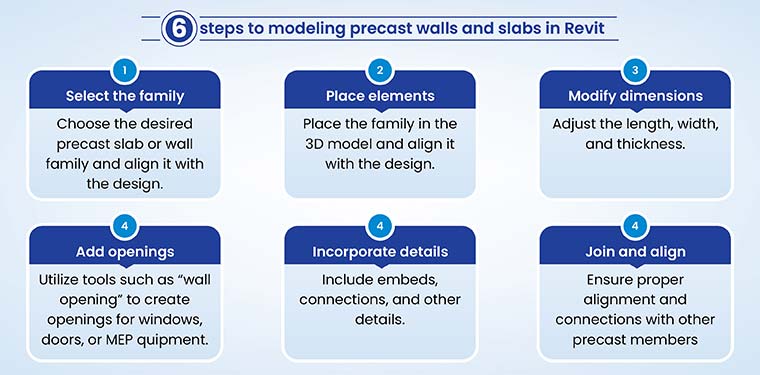
Inserting Connections and Reinforcements
To accurately represent precast connections, use Revit families for connection types like bolts, welds, and plates. For reinforcement, utilize the “Rebar Tool” to include Rebar within precast elements, which defines size, spacing, and lapping for structural drawings. This ensures structural drawings reflect accurate reinforcement configurations, supporting efficient production, and assembly of precast elements while managing compliance with industry standards and design specifications.
Utilizing Revit Add-Ons for Precast Design
The Autodesk Precast Extension in Revit is a tool for making concrete workflows seamless. These tools simplify the creation of precast elements like slabs, walls, and connections, by delivering specialized tools for modeling, segmentation, and reinforcement. The extension is also used to automate shop-drawing creation like sections, views, and schedules, which improves productivity and reduces errors in precast construction.
The Autodesk Precast Extension for Revit enhances design and modeling of precast elements including slabs, walls, and connections. It delivers advanced tools for element segmentation, automated generation of shop drawings, and reinforcement detailing, ensuring greater model efficiency, reinforcement accuracy, and seamless documentation workflows.
Generating Accurate Precast Shop Drawings in Revit
Creating accurate precast shop drawings in Revit requires the use of a dedicated view template and filters to split precast members. Accurate dimensions, annotations and schedules provide detailed information on fabrication and installation workflows.
Automating Shop Drawing Creation
Engineers can significantly speed up their shop drawing documentation process in Revit through built-in automation tools and extensions like Autodesk Precast. The customization of predefined views and sheets specifically for shop drawing needs serves as the foundation for streamlined workflows. From there, automated capabilities efficiently extract plans, sections, elevations, and details – complete with precise dimensions and annotations.
Annotating and Detailing Drawings
Best practices to add annotations and details in Revit include standardizing symbols, clear dimensioning, and consistent labeling. Ensure that every annotation is precise and positioned to prevent clutter. Use predefined annotation families, maintain drawing scale accuracy, and check for compliance with standards and local codes to improve clarity and mitigate errors.
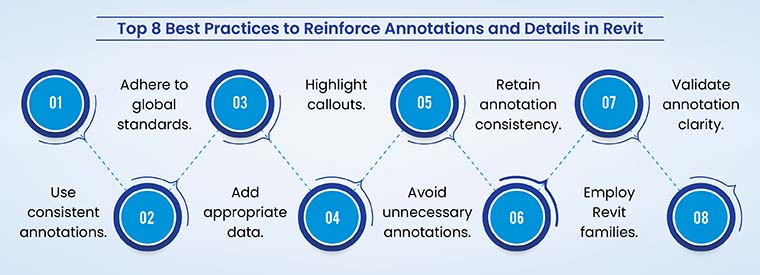
- Utilize standardized annotations: Ensure consistency in fonts, text size, and line weights for notes, dimensions, and symbols throughout the project.
- Comply with industry standards: Follow regional or project-specific standards like AIA, ISO, etc. which adhere with regulatory guidelines.
- Add relevant data: Add reinforcement information, material specs, and connection types to annotations and details.
- Use callout details: Highlight important areas that need urgent attention, which ensures they are placed in a clear view.
- Be concise: Avoid cluttering annotations with unnecessary information to maintain reading clarity for fabricators and contractors.
- Maintain consistency: Regularly check annotations to match the 3D model to prevent ambiguities between design and execution.
- Use Revit families and tags: Utilize pre-configured families and tags, or customize them to build precast members, which ensures effective visualization of required details.
- Check clarity: Ensure every annotation is clear and understandable to every project participant to avoid misinterpretation during construction.
Quality Control and Review Processes
Implementing quality checks to include precision and consistency in shop drawings is crucial for successful project outcomes. Consistently viewing and cross-referencing shop drawings with the planned design ensures every detail including dimensions, materials, and reinforcement is accurate. The use of automated tools in Revit flags issues and helps with performance checks for complex precast elements. Collaborating with designers, structural engineers, contractors, and fabricators during the review stage helps with preemptive issue identification.
Establishing structured approvals where various stakeholders sign off on every stage guarantees every shop drawing aligns with project parameters and adheres to industry standards. Quality control for precast concrete drawings centers on thorough review processes. The review can incorporate interference detection while ensuring compliance with ACI and PCI industry standards. Detailed verification of dimensions, connections, and reinforcement specifications can enhance drawing accuracy and reliability.
Case Study: Streamlining Precast Modeling with Revit
A 3D precast model in Revit with 5 mm clash coordination leads to time and cost savings.
A precast manufacturer from the UAE outsourced its need to create a precast model at LOD 450 for a residential project in the UAE. CAD drawings, PDF, and Excel files were provided as input. Using Revit and Navisworks, the team at TrueCADD used concrete modeling workflows to create a 3D model at LOD 450, with precast shop drawings and Bar Bending Schedules (BBS). The final model handed over to the client led to:
- Clash coordination of the model under 5 mm for M60 concrete grade
- Quick deliverable TAT with 100% accuracy
- Time and cost savings
- A unique ID integrated with each structural element for precise planning, sequencing, and erection
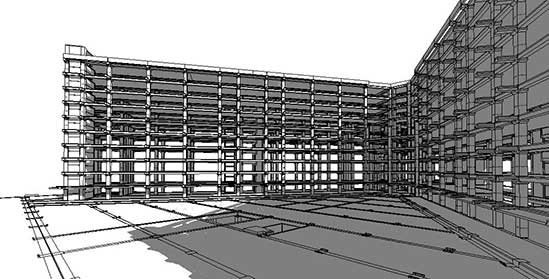 Building Perspective View
Building Perspective View
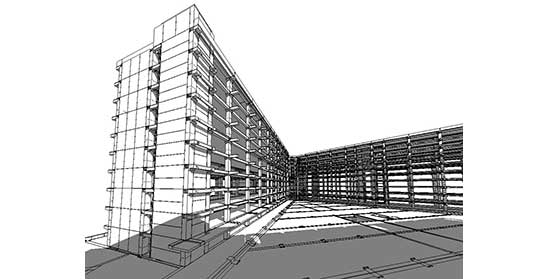 Building Image
Building Image
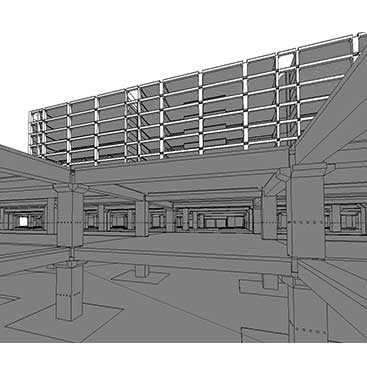 Building Internal View
Building Internal View
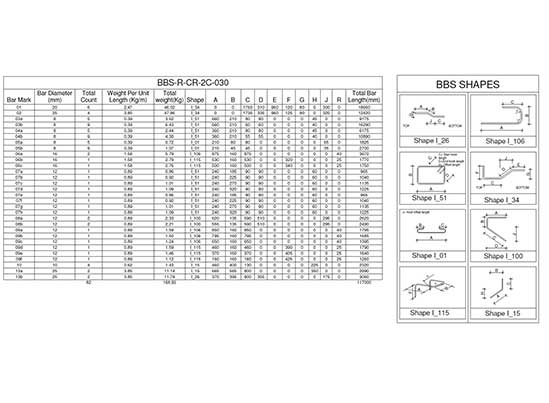 Staircase Reinforment
Staircase Reinforment
A Revit structural model at LOD 450 saves costs for an office-building project in India.
A leading precast manufacturing firm from India outsourced its rebar modeling needs to TrueCADD for an office-building project. The firm provided 2D drawings and structural design of rebar and concrete, and the team navigated coordination challenges to create a clash-free structural model at LOD 450 in Revit and Navisworks with Bar Bending Schedules. Handing over the final deliverables to the client led to the following:
- A full sheet setup with accurate documentation
- Cost savings with accurate and efficient deliverables and results
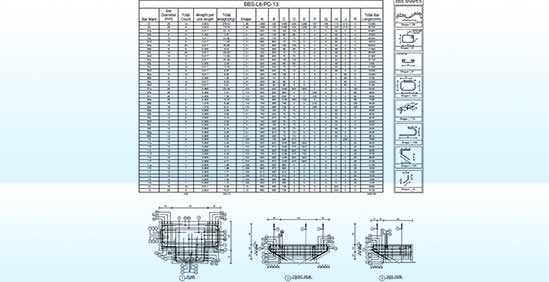 Corbel Details and BBS
Corbel Details and BBS
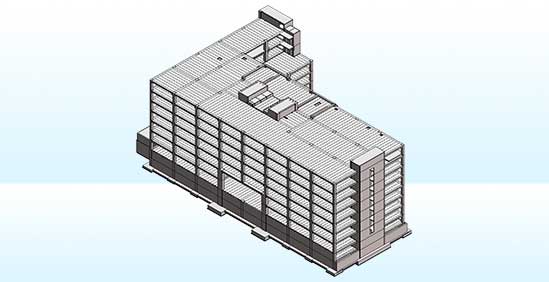 Revit Structural Model
Revit Structural Model
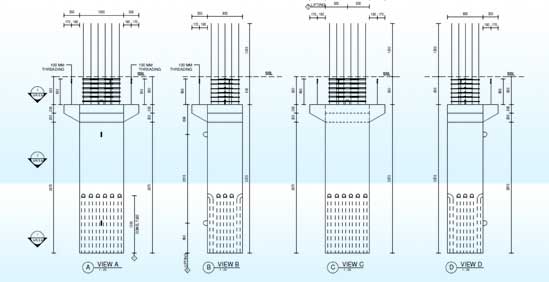 Shop Drawings
Shop Drawings
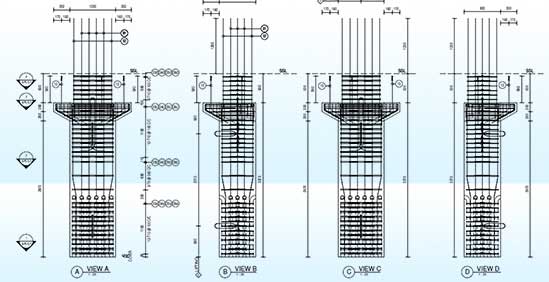 Structural Shop Drawings
Structural Shop Drawings
Tips and Best Practices for Accelerating Precast Workflows
Project teams can establish a more efficient concrete modeling workflow through early collaboration in preconstruction. Using Revit and specialized plugins enables precise model creation for contractors. The workflow naturally progresses to automated shop drawing generation, complete with detailed annotations and schedules. This integrated approach reduces errors while accelerating project delivery timelines.
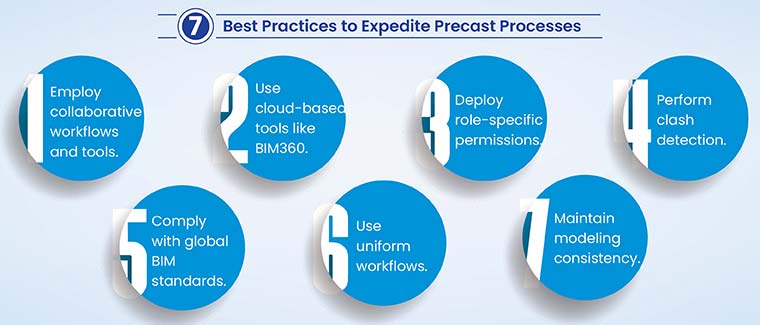
Collaborative Workflows for Precast Modeling
Setting collaborative workflows for precast modeling
Establishing collaborative workflows for precast modeling includes deploying clear communication protocols. Utilize Revit’s work-sharing capabilities and conduct perpetual model reviews. Standardized and collaborative modeling practices promote a team culture that is effective for precast modeling and shop drawing creation.
Making efficient use of cloud-based platforms like BIM360 and shared models
BIM360 fosters seamless communication and coordination using real-time model access, communication platforms, and thorough change management. Clarity in roles and responsibilities for 3D model management ensures consistency and data integrity.
Understanding the significance of role-specific permissions and clash detection
Role-based permissions in cloud-based collaboration platforms like BIM360 prevent unauthorized changes. Clash detection flags and resolves conflicts to streamline precast design and improve overall project coordination.
Leveraging BIM Standards for Precast Design and Concrete Shop Drawings
Adhering to BIM standards like AIA or ISO 19650 protocols
Integrating BIM standards including AIA protocols or ISO 19650 in the precast model enhances precast workflow interoperability and efficiency. Standardized information exchange and naming conventions streamline collaboration and mitigate errors across various project lifecycles.
Standardized workflows and consistent modeling
The use of standardized workflows and consistent modeling techniques improves precast model quality and ensures the creation of precise precast shop drawings. Clarity in guidelines reduces errors and rework, which leads to efficient 3D model creation for precast members.
Advantages of integrating BIM standards
Integrating project-specific and national standards lowers errors and ensures complete project compliance. Consistent data and processes enhance communication, interference detection, and project coordination to reduce risks and enhance efficiency.
Explore How BIM Transforms Prefab & Precast Construction.
Read more here »Conclusion
Revit’s BIM capabilities with precast-specific extensions transform the precast workflow from conceptual design through fabrication. The integration of parametric modeling, automated reinforcement detailing, and intelligent connection design improves project deliverables while cutting concrete modeling time by up to 40%. Through shared parameters and standardized families, teams maintain data consistency across the project lifecycle, enabling direct interoperability between the design, analysis, and manufacturing phases.
The platform’s clash detection capabilities, paired with automated precast shop drawings generation and quantity extraction, reduce fabrication errors and optimize material utilization. These features establish Revit as a core tool for modern precast construction, delivering precision and efficiency at scale.
Need help on an ongoing basis?
We establish long term business relationships with clients and are committed to total customer satisfaction.
